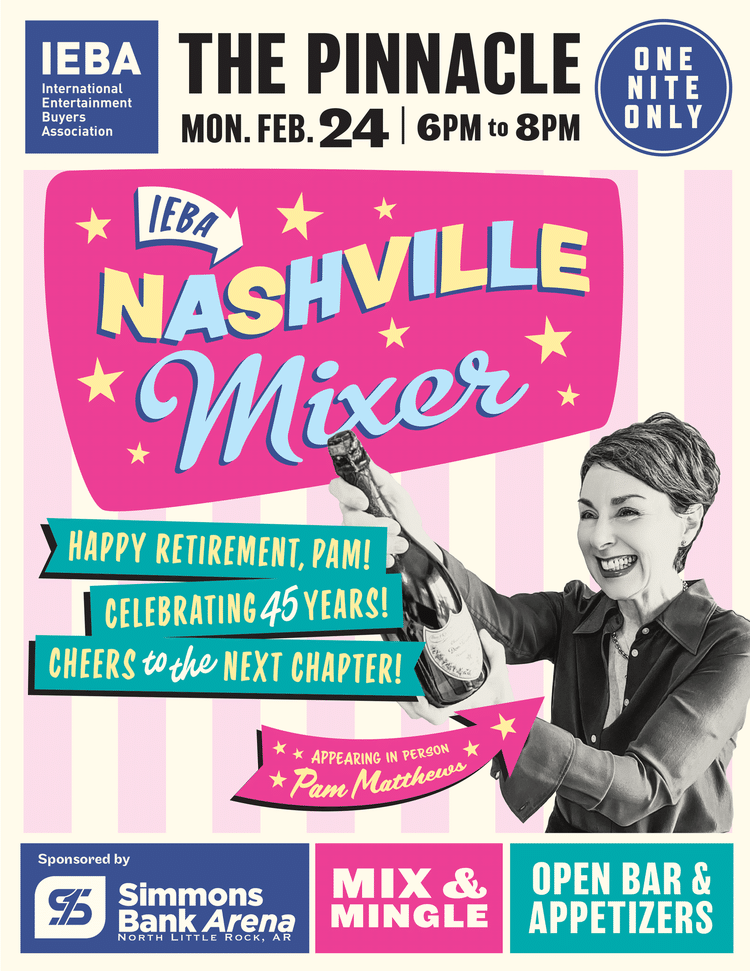
Immersive experiences are one new avenue of investment for promoters, with the most prominent being the Van Gogh exhibitions. There are several that are touring North America currently. Ian Noble of Metropolitan Entertainment is involved with the version known as Beyond Van Gogh, and NACPA talked to him about it.
- I can’t escape the Van Gogh experience. It’s all over Instagram and Twitter. Here in Fresno, everyone has been talking about it. Is my perception off?
No. I’ll go as far as saying it’s a cultural phenomenon. It seems to be the first one of these to hit critical mass. Immersive experiences have existed in various forms for a long time. It’s not a new thing but this format is.
I’ve been intrigued by this art form for several years. I’ve always liked art galleries and, as a promoter, am always looking for ways to do new, cool things that can make money. The turning point for me was when I was in Tokyo in 2018. I went to see teamLab Planets. It is this Japanese company that has exhibits all around the world. Their flagship show is called Planets. It’s a little different from Van Gogh: It’s more complex, it’s in multiple rooms. It’s more of a physical experience with things like giant balloon and water. Van Gogh is all about projections.
I saw this and it just blew my mind. I wanted to be involved.
I started developing my own idea, and I kept my eyes open for events to produce. I heard of the first version of the Van Gogh show in Paris. I was reading how it was drawing a thousand people, then 10,000, then more than a million. Then I saw that it was starting to appear in North America in 2020. I reached out to a couple of the companies that were doing them and had some conversations.
It seemed that even with Covid, these events could take place because they were socially distanced by design.
It seemed to be a perfect storm. And it was a new thing with a well-known artist. It just took off.
We became involved with Beyond Van Gogh. There are five or more shows out there. The intellectual property is in the public domain so you, too, can start your own. Many people have. Sometimes two have played at the same time in the same city, like New York and other major markets.
This is a byproduct of technology advancing. The projectors are cheaper and more powerful. They are still expensive but 10 years ago, it would have been just too costly to mount a show like this.
The Van Gogh thing has sold millions of tickets around the world so other things have popped up. Now that Covid is less of a concern, people can go out again and it’s no longer the only game in town, but it’s still very popular.
I think it’s a new thing that’s here to stay, like television or radio. Immersive experiences are an art form that will be here a long time to come.
- This particular experience will stay in a market two to three months. Is that the usual protocol?
Yes. Basically, you sit it down as long as you can. We did Van Gogh in St. Louis and I think we opened for six weeks initially and ended up running for six months.
Did you enjoy it?
- Yes. By way of example, I went home and ordered Lust For life. I also had to come to grips with how little I knew about Van Gogh. Apparently, all I knew was a flower and a starry night.
Yes. That’s like a lot of people. I think it educates them. I shouldn’t speak for art galleries because they tend to be purists, but I think this helps their cause.
- What is the genesis for this particular experience?
As far as I know, this company in Paris created the modern-day immersive experience at Atelier des Lumières. They made the show which spawned all the others. That’s my understanding: credit the French.
- This just seems like a healthy financial nut, to rent out a convention hall for months, to install the production, to hire staffing. How many people go through it per day? I was there for 40 minutes and got a head count, but wasn’t there all day.
You can do a thousand or more a day, depending on the hours. We sell staggered tickets every 15 minutes to keep people flowing through.
I guess, like every show, there is the gross revenue, the expenses, and the net income. To run for a long period time is a fairly healthy nut. There’s running costs of the equipment, which is plentiful. These are high-tech instruments. It costs a fair bit to utilize them. Advertising adds up. The staff and technician costs add up too.
But tickets average about $50. If you’re selling thousands of them, you can generate a fair bit of revenue. It can be very lucrative.
There’s real risk. When we got involved in 2020, it was the middle of the COVID dead zone, and promoting anything new was a big risk. Like every new show we’ve done it took a fair bit of belief to take it on. Now we look like geniuses! Every once in a while, you get things right.



